方法一:双指针
算法解析:
- 倒序遍历字符串 $message$ ,记录单词左右索引边界 $i$ , $j$ ;
- 每确定一个单词的边界,则将其添加至单词列表 $res$ ;
- 最终,将单词列表拼接为字符串,并返回即可。
下图中的
s对应本题的message。
<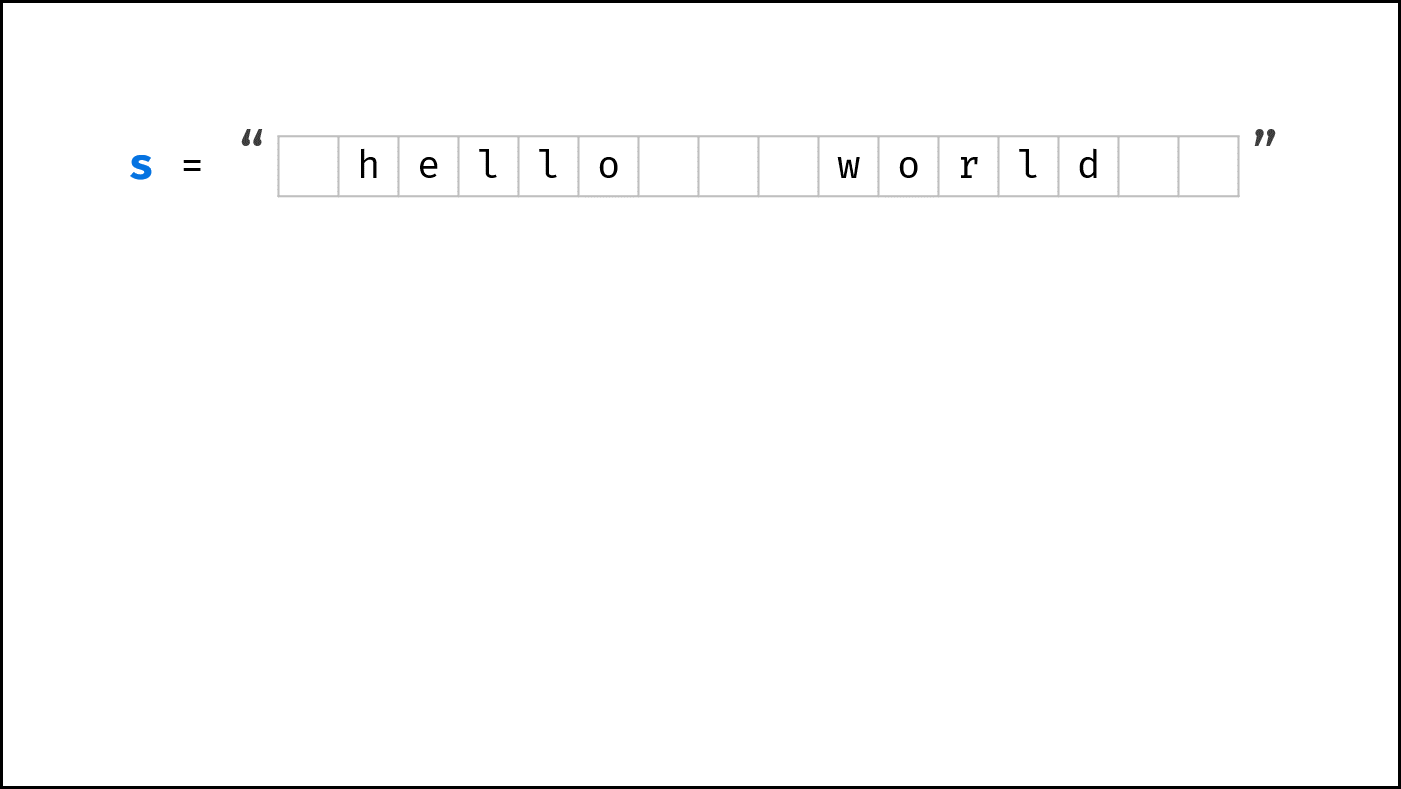 ,
,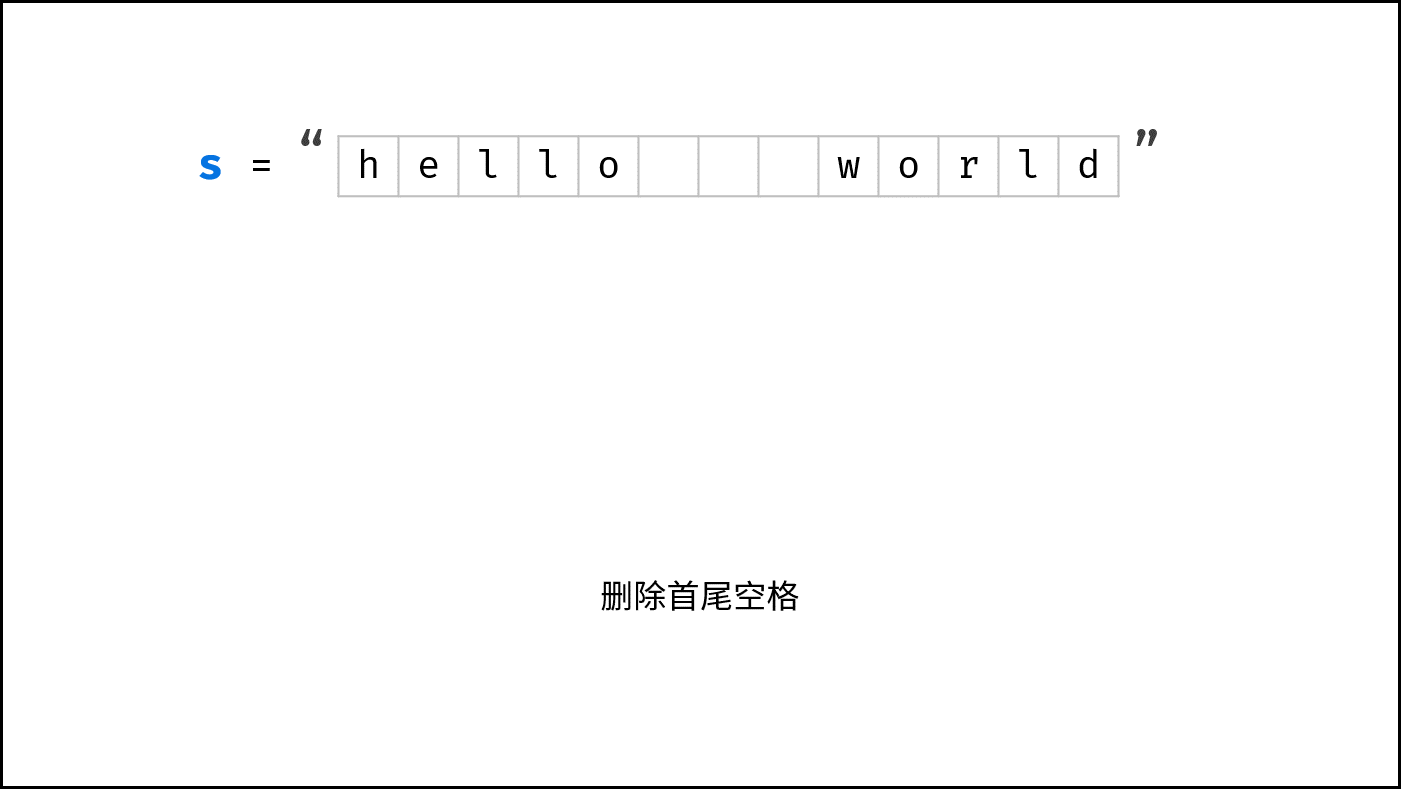 ,
,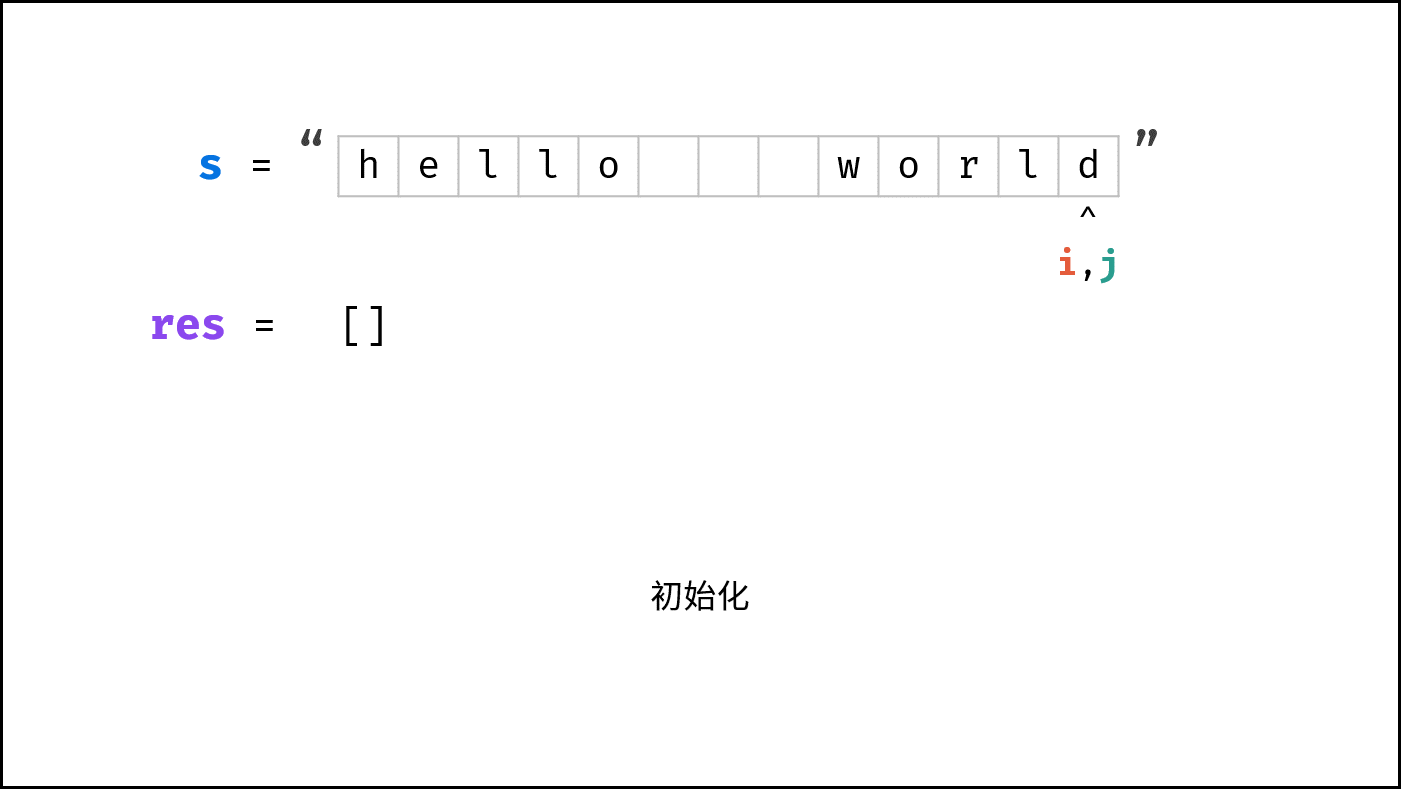 ,
,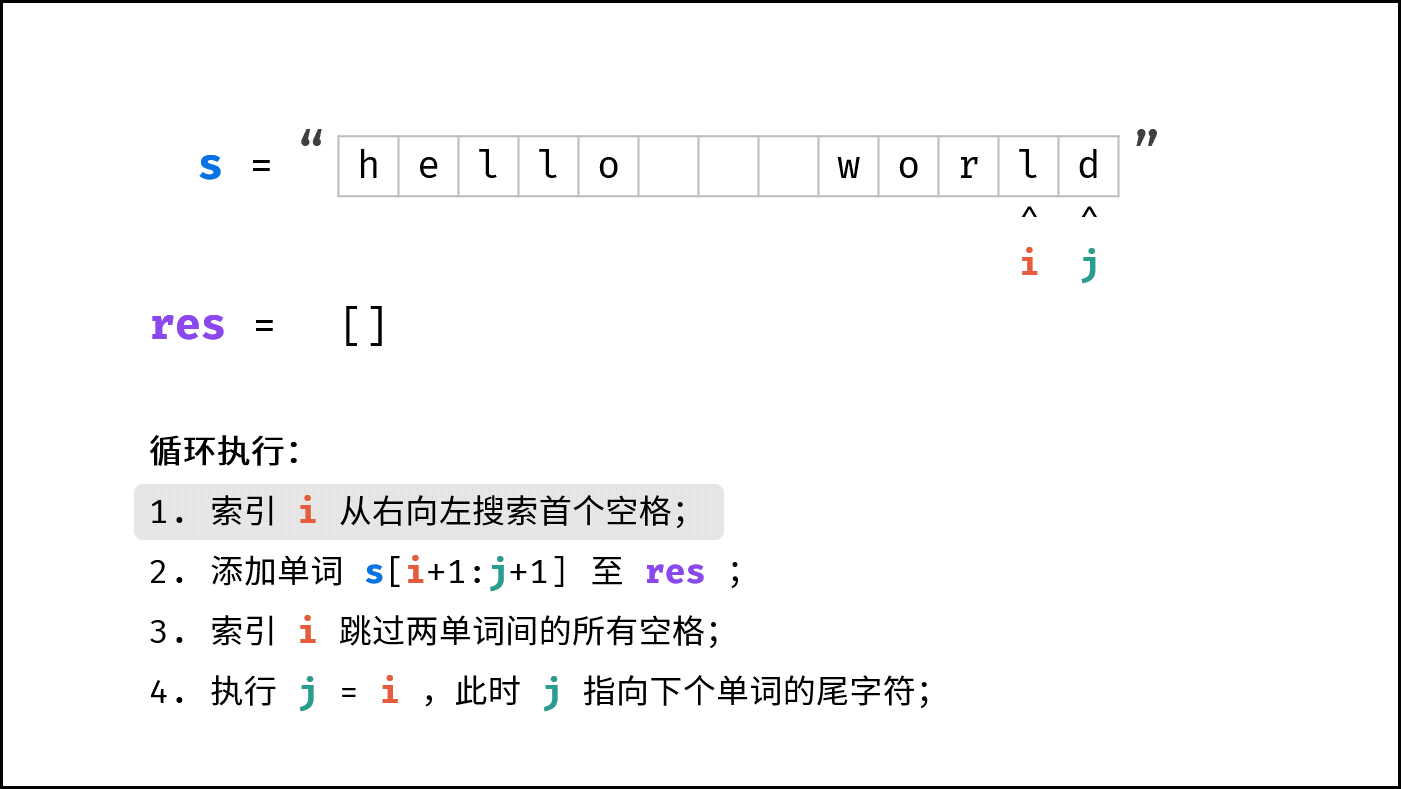 ,
,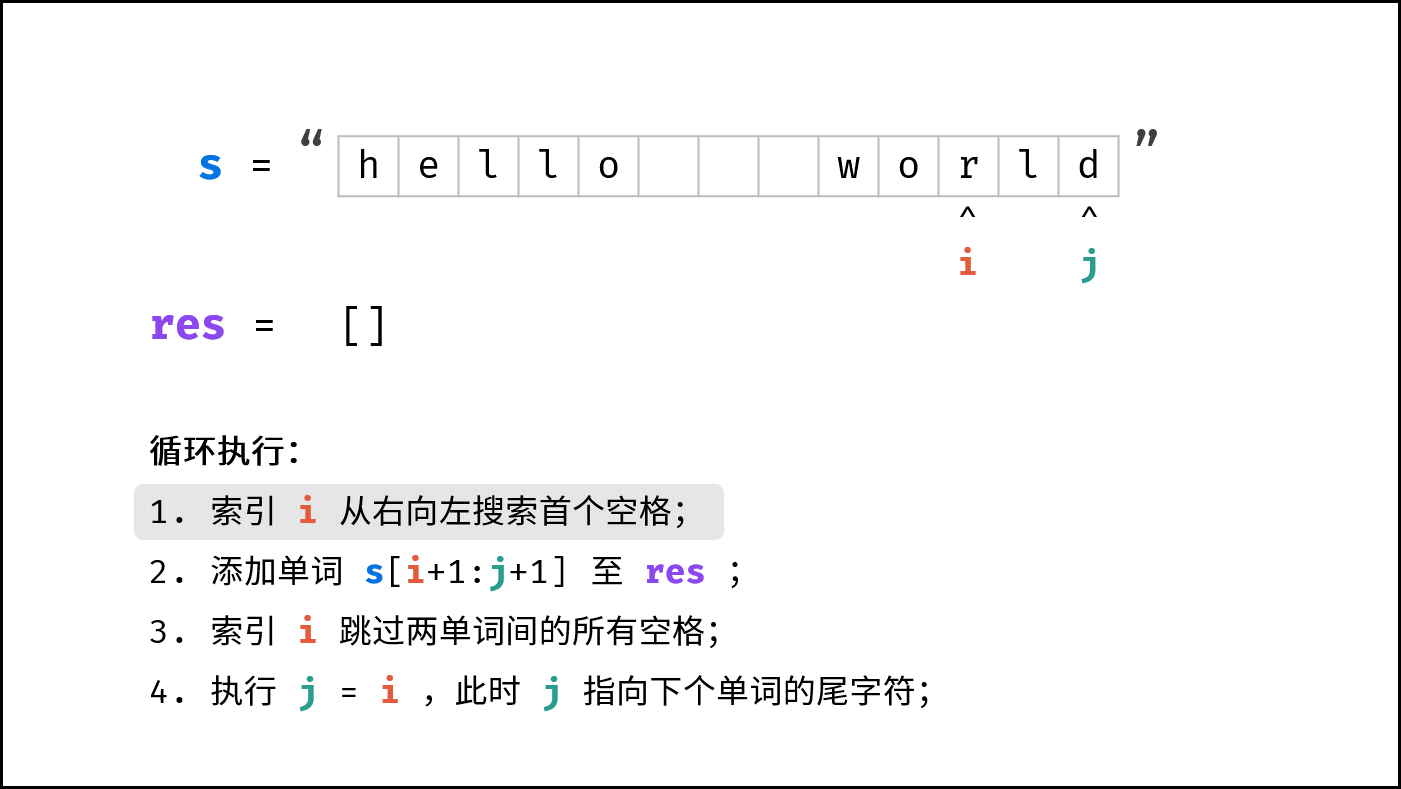 ,
,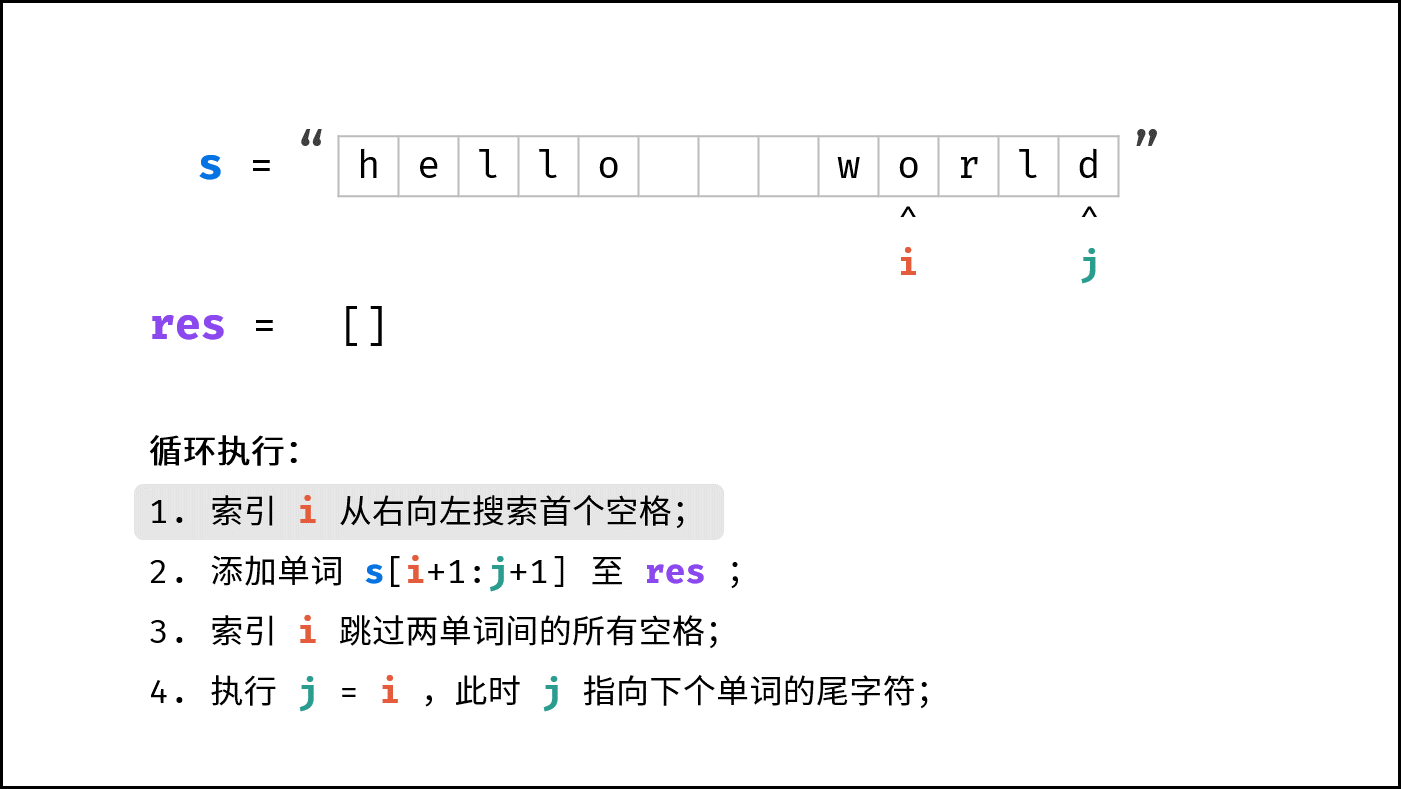 ,
,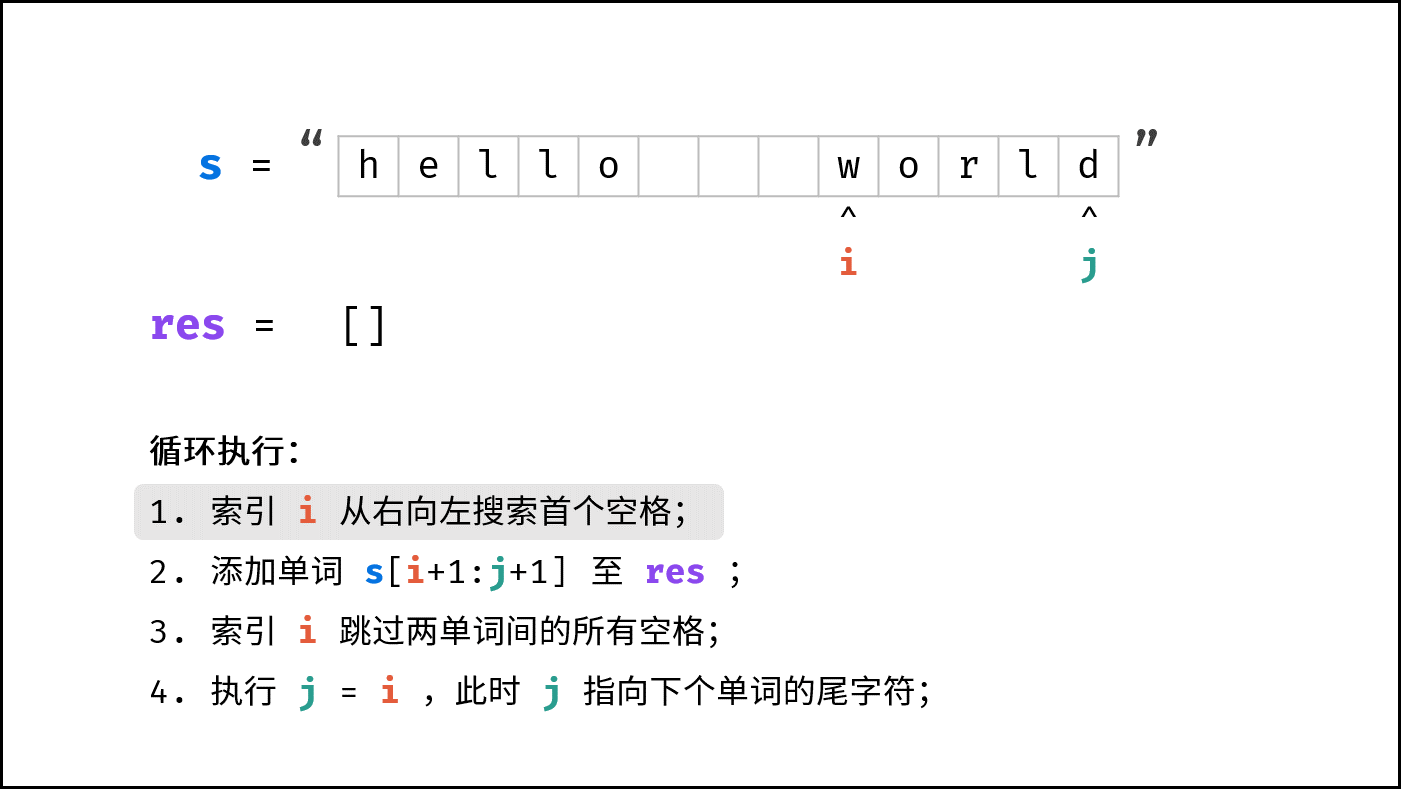 ,
,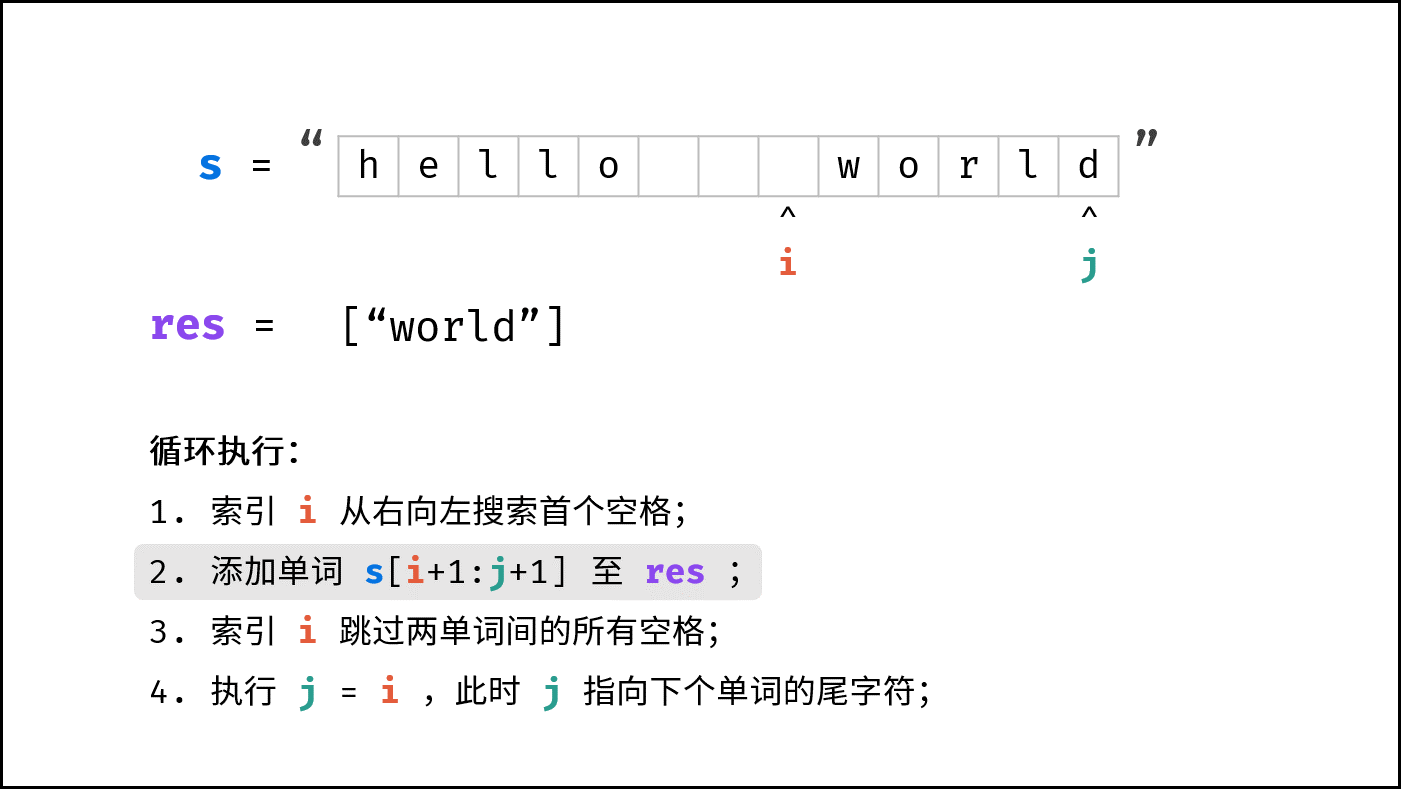 ,
,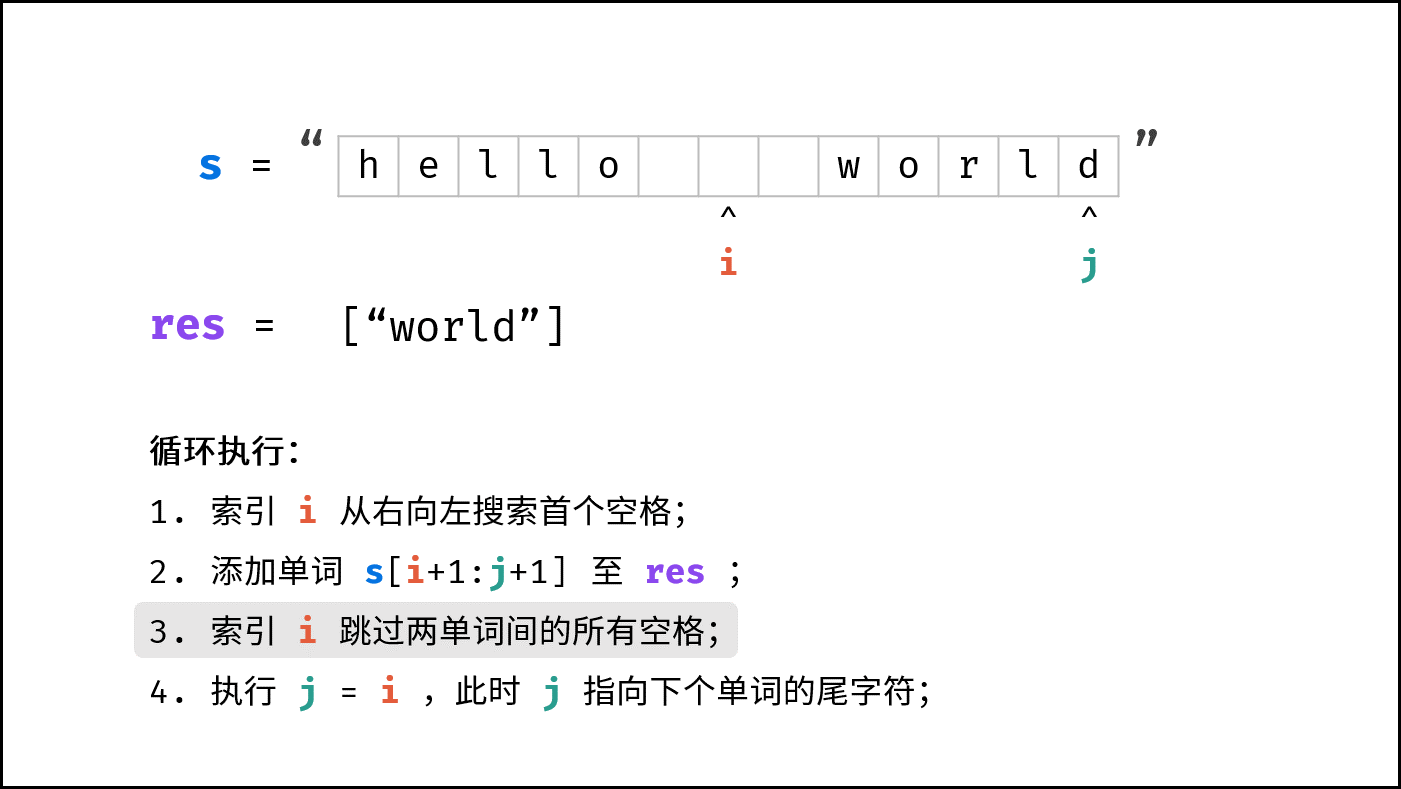 ,
,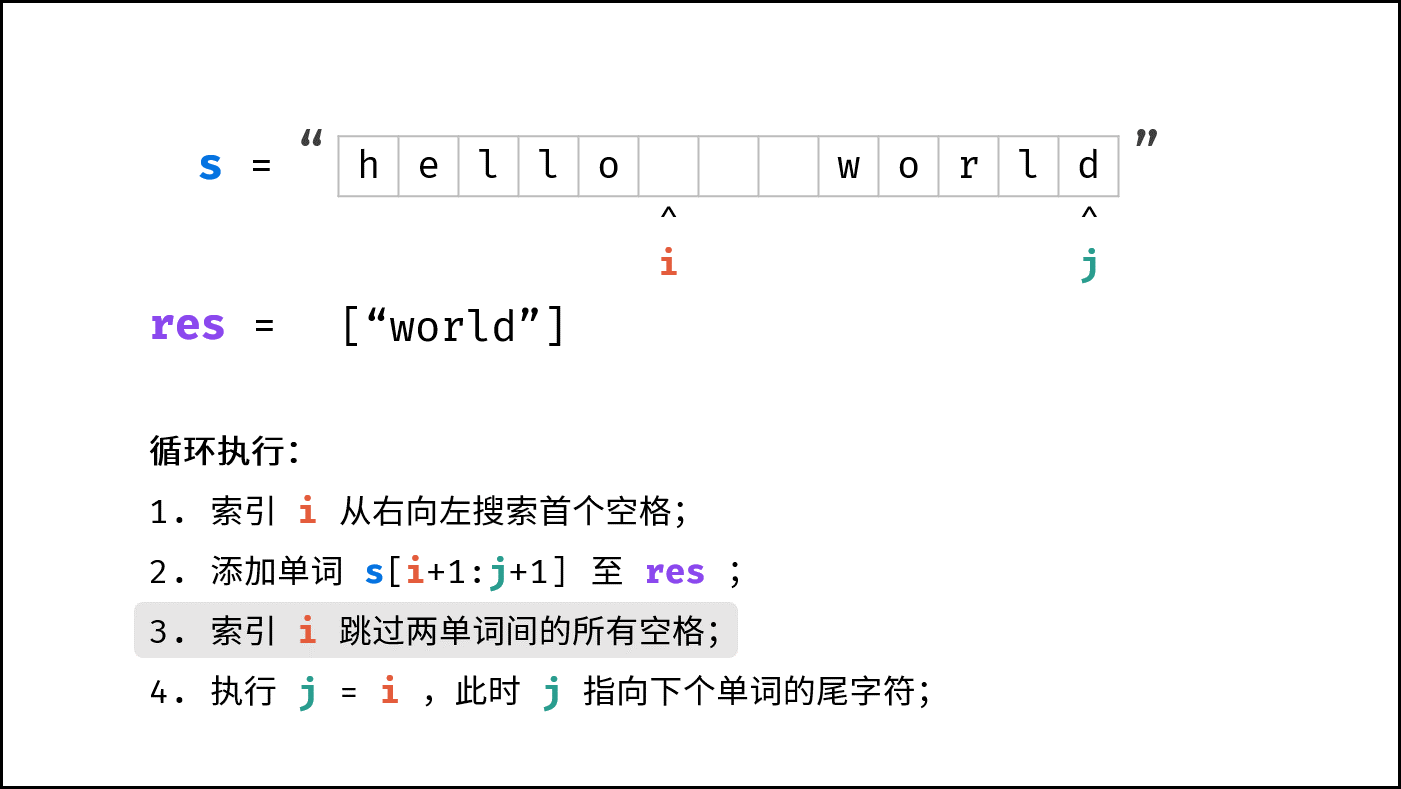 ,
,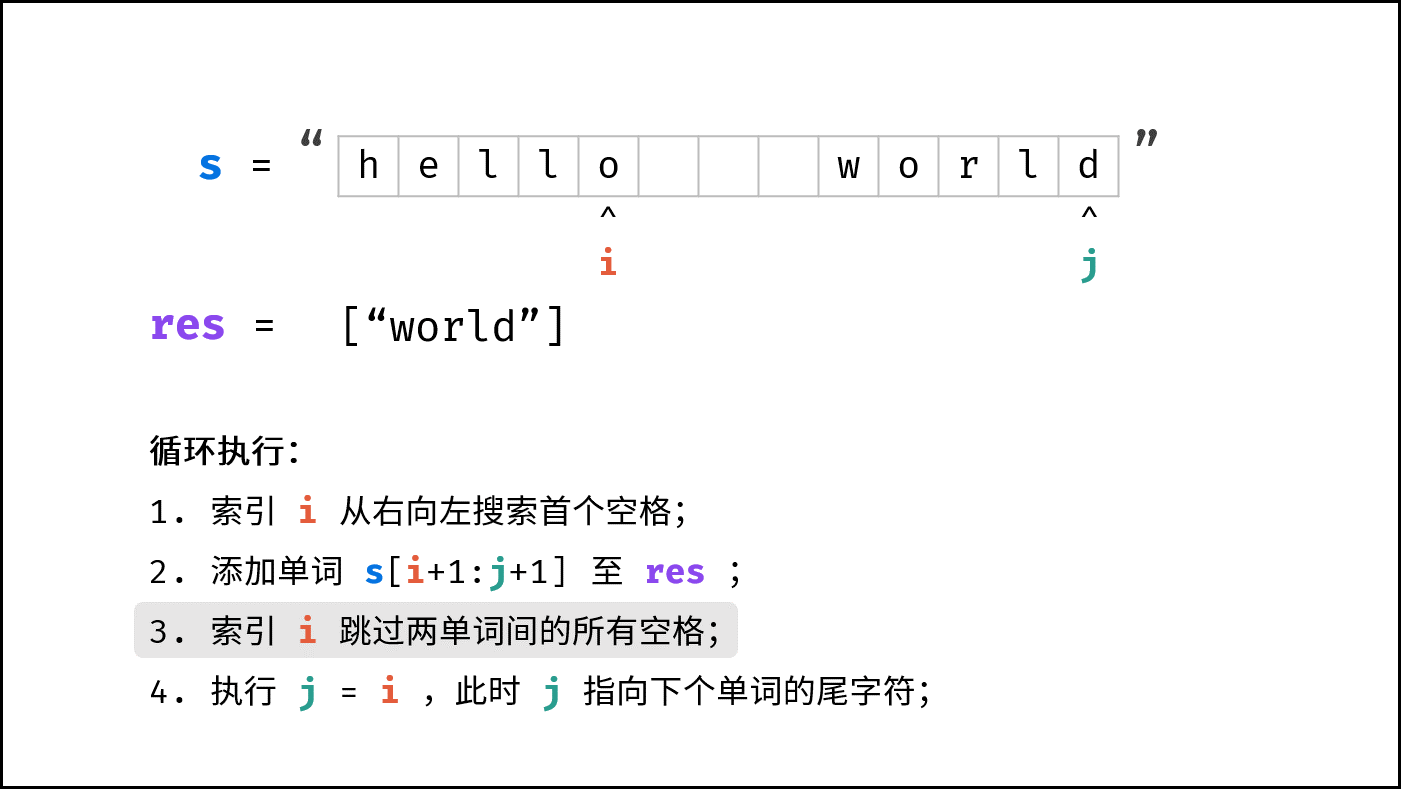 ,
,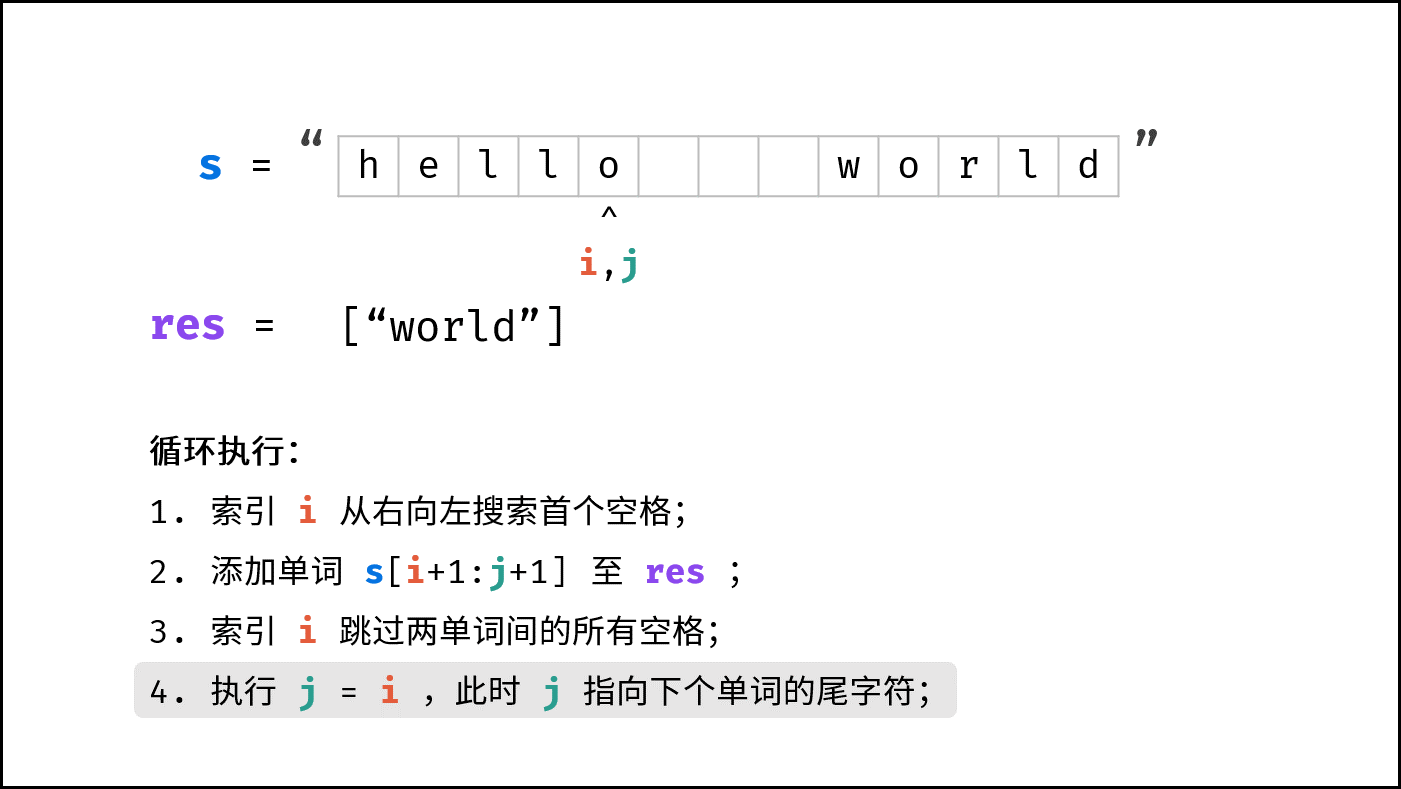 ,
,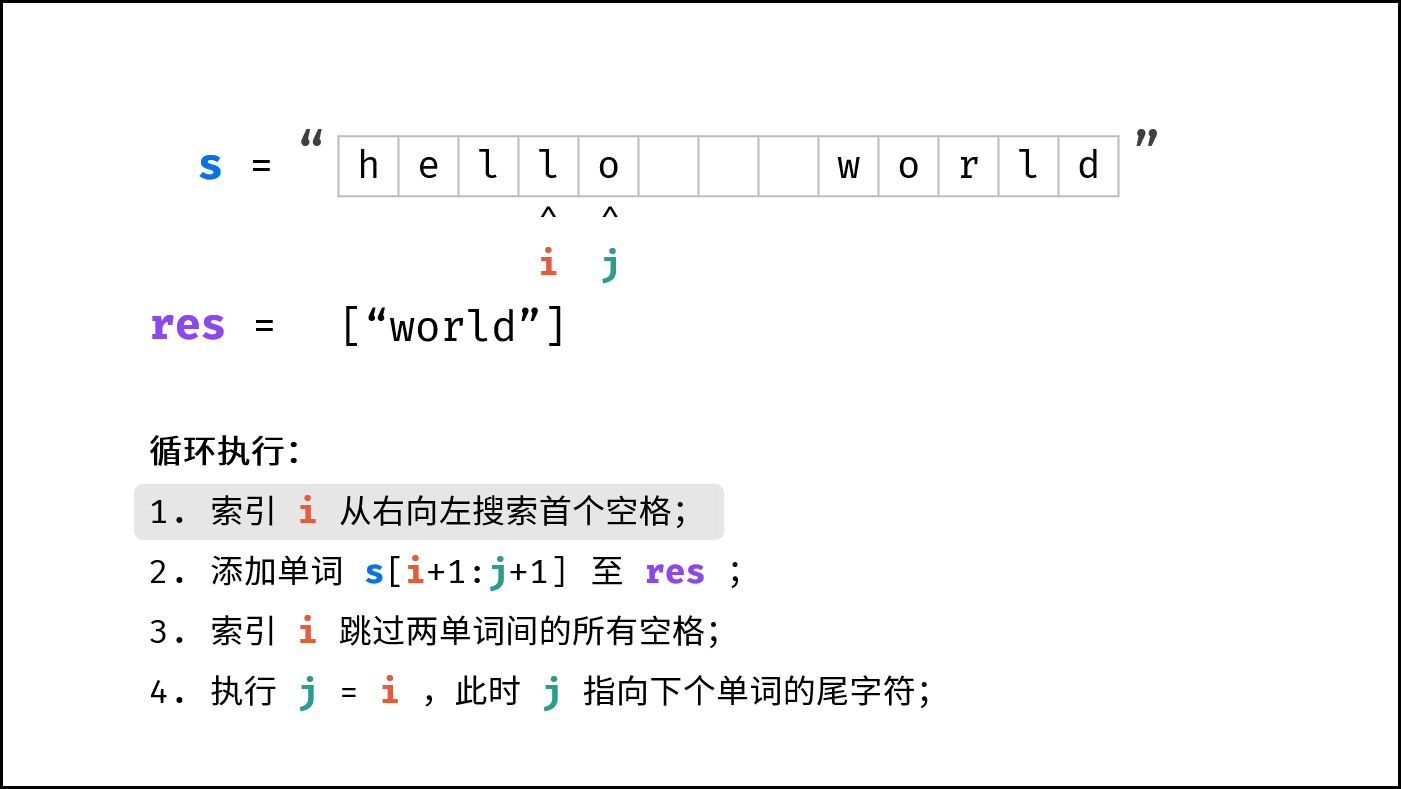 ,
,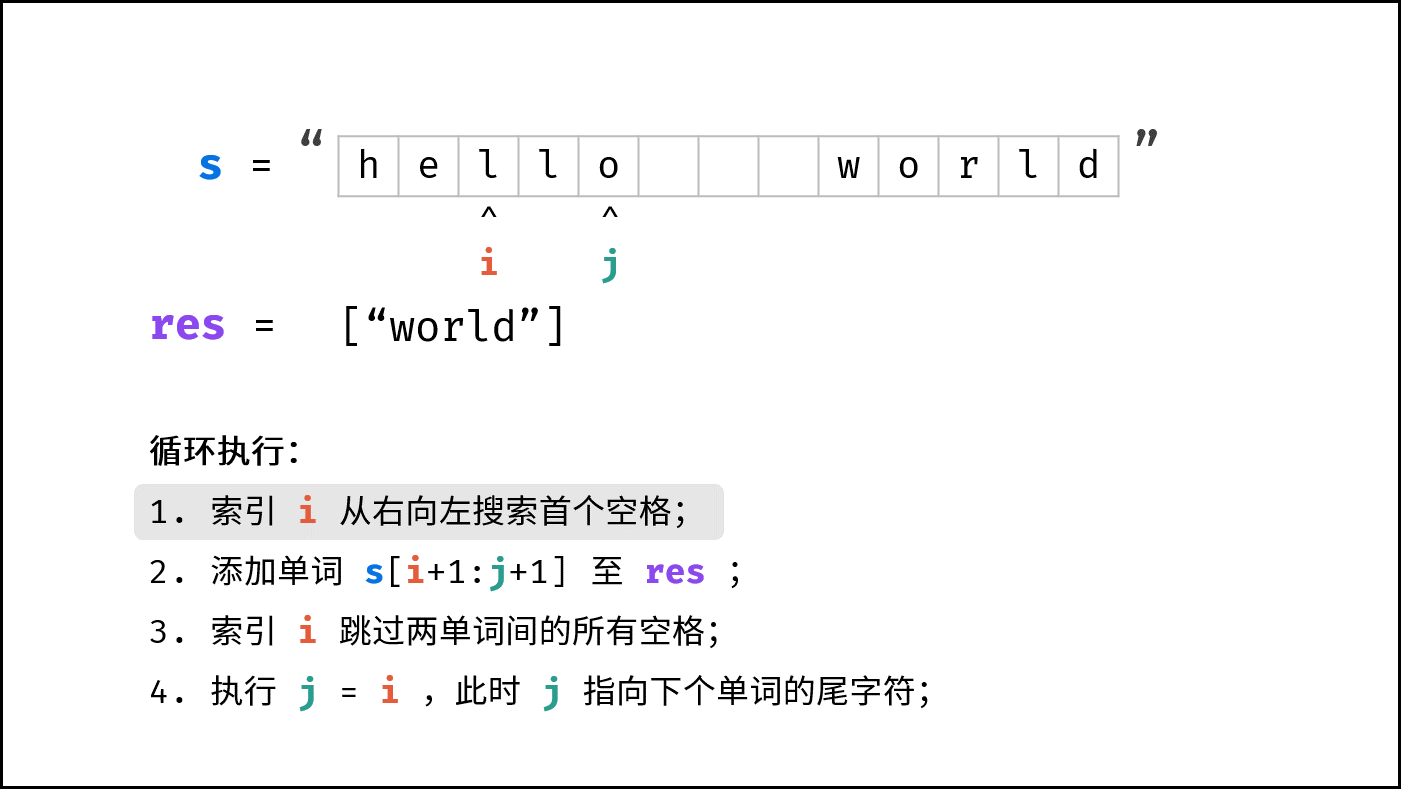 ,
,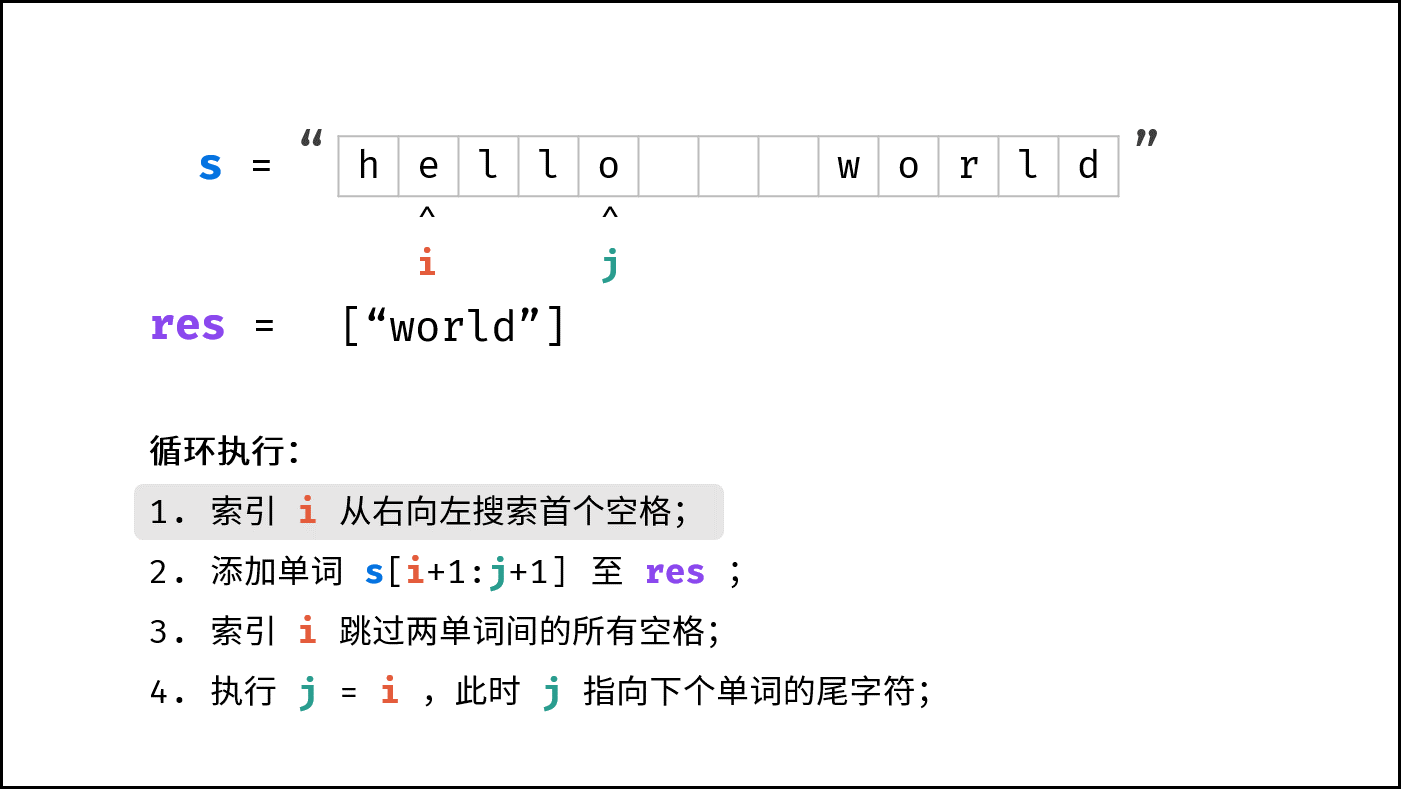 ,
,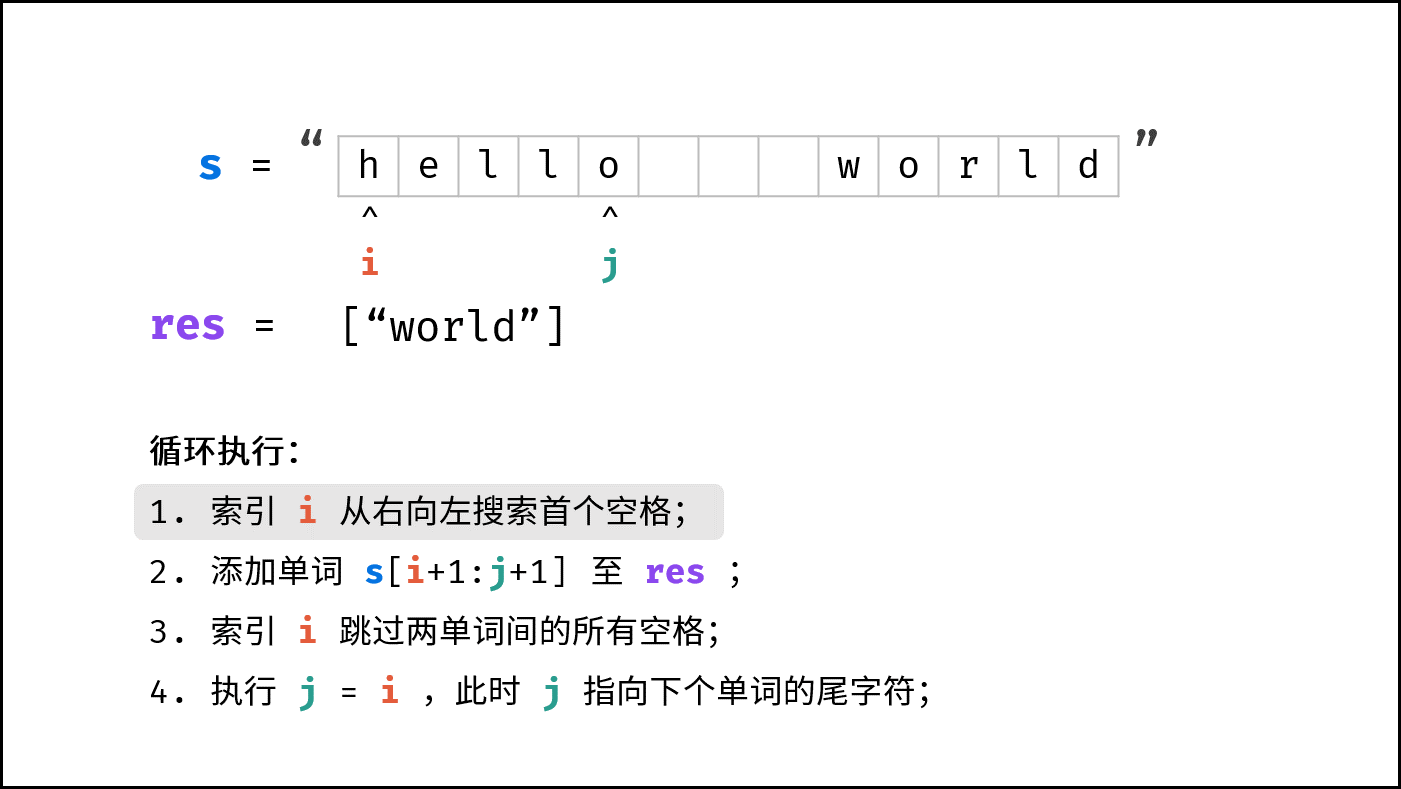 ,
,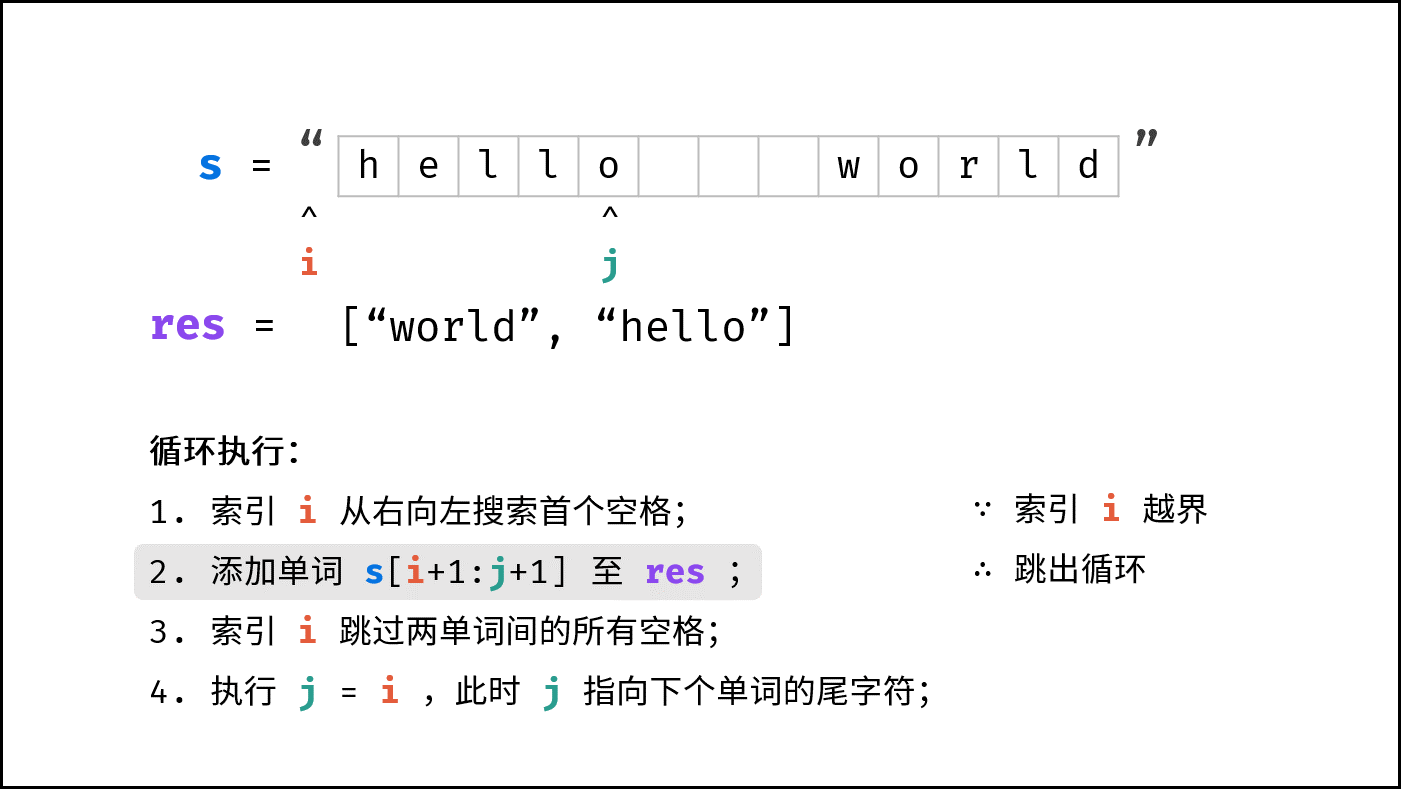 ,
,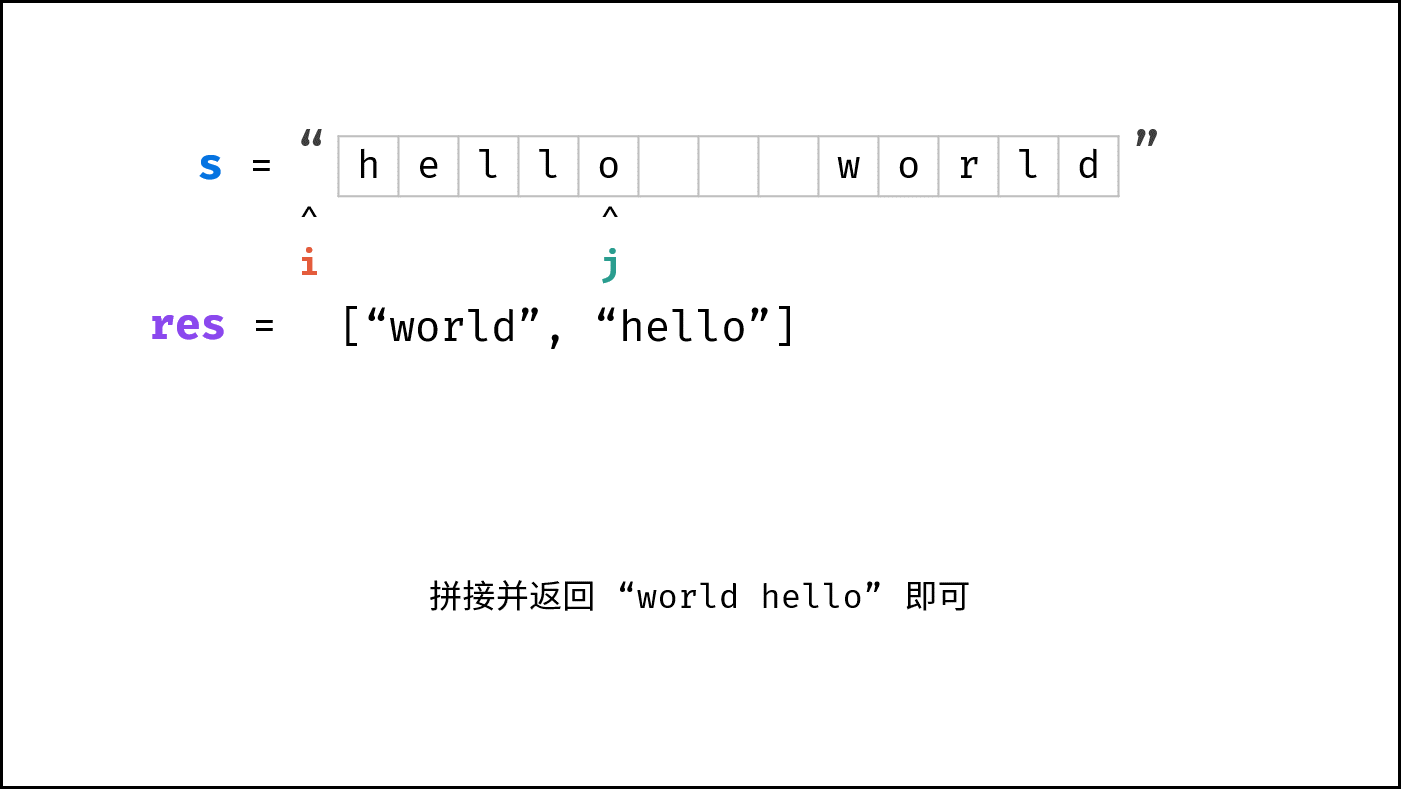 >
>
代码:
Python
class Solution:
def reverseMessage(self, message: str) -> str:
message = message.strip() # 删除首尾空格
i = j = len(message) - 1
res = []
while i >= 0:
while i >= 0 and message[i] != ' ': i -= 1 # 搜索首个空格
res.append(message[i + 1: j + 1]) # 添加单词
while i >= 0 and message[i] == ' ': i -= 1 # 跳过单词间空格
j = i # j 指向下个单词的尾字符
return ' '.join(res) # 拼接并返回Java
class Solution {
public String reverseMessage(String message) {
message = message.trim(); // 删除首尾空格
int j = message.length() - 1, i = j;
StringBuilder res = new StringBuilder();
while (i >= 0) {
while (i >= 0 && message.charAt(i) != ' ') i--; // 搜索首个空格
res.append(message.substring(i + 1, j + 1) + " "); // 添加单词
while (i >= 0 && message.charAt(i) == ' ') i--; // 跳过单词间空格
j = i; // j 指向下个单词的尾字符
}
return res.toString().trim(); // 转化为字符串并返回
}
}复杂度分析:
- 时间复杂度 $O(N)$ : 其中 $N$ 为字符串 $message$ 的长度,线性遍历字符串。
- 空间复杂度 $O(N)$ : 新建的 list(Python) 或 StringBuilder(Java) 中的字符串总长度 $\leq N$ ,占用 $O(N)$ 大小的额外空间。
方法二:分割 + 倒序
利用 “字符串分割”、“列表倒序” 的内置函数 (面试时不建议使用) ,可简便地实现本题的字符串翻转要求。
算法解析:
- Python : 由于 $split()$ 方法将单词间的 “多个空格看作一个空格” (参考自 split()和split(' ')的区别 ),因此不会出现多余的 “空单词” 。因此,直接利用 $reverse()$ 方法翻转单词列表 $strs$ ,拼接为字符串并返回即可。
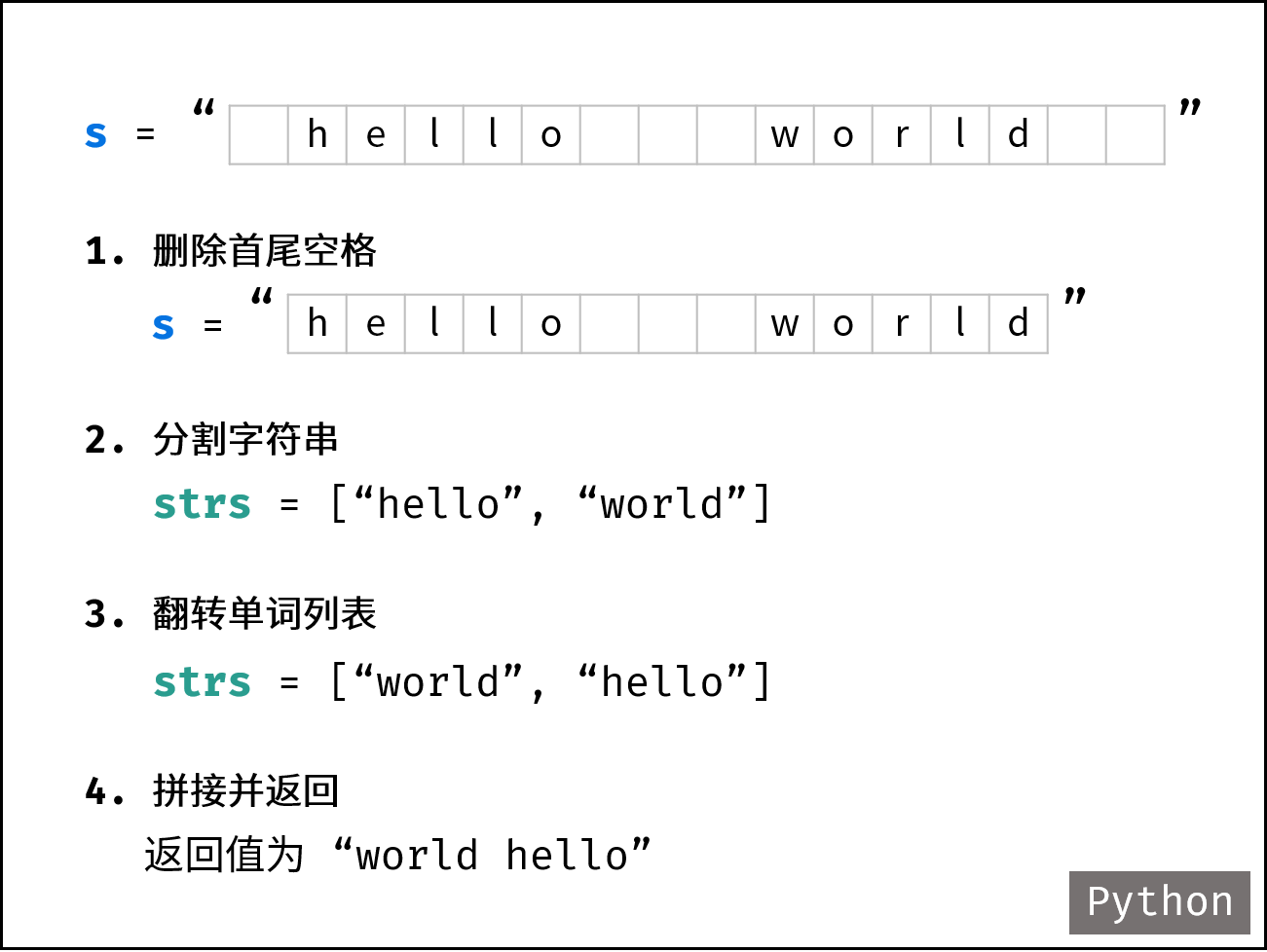
- Java : 以空格为分割符完成字符串分割后,若两单词间有 $x > 1$ 个空格,则在单词列表 $strs$ 中,此两单词间会多出 $x - 1$ 个 “空单词” (即
"")。解决方法:倒序遍历单词列表,并将单词逐个添加至 StringBuilder ,遇到空单词时跳过。

代码:
Python
class Solution:
def reverseMessage(self, message: str) -> str:
message = message.strip() # 删除首尾空格
strs = message.split() # 分割字符串
strs.reverse() # 翻转单词列表
return ' '.join(strs) # 拼接为字符串并返回Java
class Solution {
public String reverseMessage(String message) {
String[] strs = message.trim().split(" "); // 删除首尾空格,分割字符串
StringBuilder res = new StringBuilder();
for (int i = strs.length - 1; i >= 0; i--) { // 倒序遍历单词列表
if(strs[i].equals("")) continue; // 遇到空单词则跳过
res.append(strs[i] + " "); // 将单词拼接至 StringBuilder
}
return res.toString().trim(); // 转化为字符串,删除尾部空格,并返回
}
}Python 可一行实现:
Python
class Solution:
def reverseMessage(self, message: str) -> str:
return ' '.join(message.strip().split()[::-1])复杂度分析:
- 时间复杂度 $O(N)$ : 总体为线性时间复杂度,各函数时间复杂度和参考资料链接如下。
split()方法: 为 $O(N)$ ;trim()和strip()方法: 最差情况下(当字符串全为空格时),为 $O(N)$ ;join()方法: 为 $O(N)$ ;reverse()方法: 为 $O(N)$ ;
- 空间复杂度 $O(N)$ : 单词列表 $strs$ 占用线性大小的额外空间。